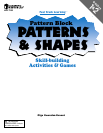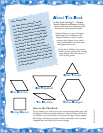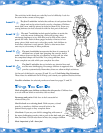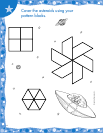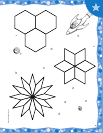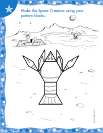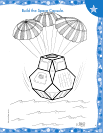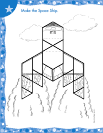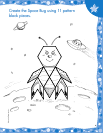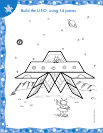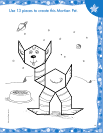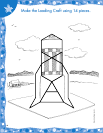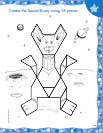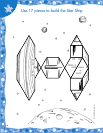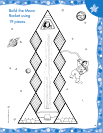
© Learning Resources, Inc.
3
The activities in this book are coded by level of difficulty. Look for
the stars in the corners of the pages.
The first 5 activities include the outlines of each pattern block
shape and can be solved easily even by a beginner. Children
must slide, turn, and flip pieces in order for them to fit. Even very
young learners can feel successful with the first part of the book.
The next 7 activities include partial outlines to make the
activities more challenging, while still giving a hint.
Encourage beginners to try their best, and to look at the whole
puzzle for hints. Each of these pages includes a hint as to how
many pieces kids must use to solve the puzzle. Ask children to
find other solutions to each puzzle. There is often more than
one way to solve many of these problems.
The next 6 activities incorporate the idea of symmetry. If
children have a hard time grasping the concept, hold a
hand mirror down on the line of symmetry so they can see what
the completed shape will look like. For young children, have
them complete one side while you complete the other.
The final 3 activities do not include any interior lines and
are the most challenging. Encourage children to approach the
puzzles systematically. Remember, there are often multiple solutions.
At the end of this book, on pages 29 and 30, you’ll find Rainy Day Extensions.
These ideas for additional fun will help you extend your pattern block activities.
Possible solutions for selected puzzles are found on pages 31 and 32.
Things You Can Do
Work alongside your children as they solve the puzzles. Children love
to work with an adult on activities such as these.
Encourage and praise. Kids love to feel successful at
whatever they do.
Use this book as a coloring book. With crayons, colored
pencils, or markers, children can add color to the
pattern block pages as they complete them.
Give hints. If you see your child is struggling with some of
the more challenging puzzles, take a peek in the back and give
him/her hints. You can also draw in lines for younger children.
Most important of all—have fun!
Level 1
Level 3
Level 2
Level 4



